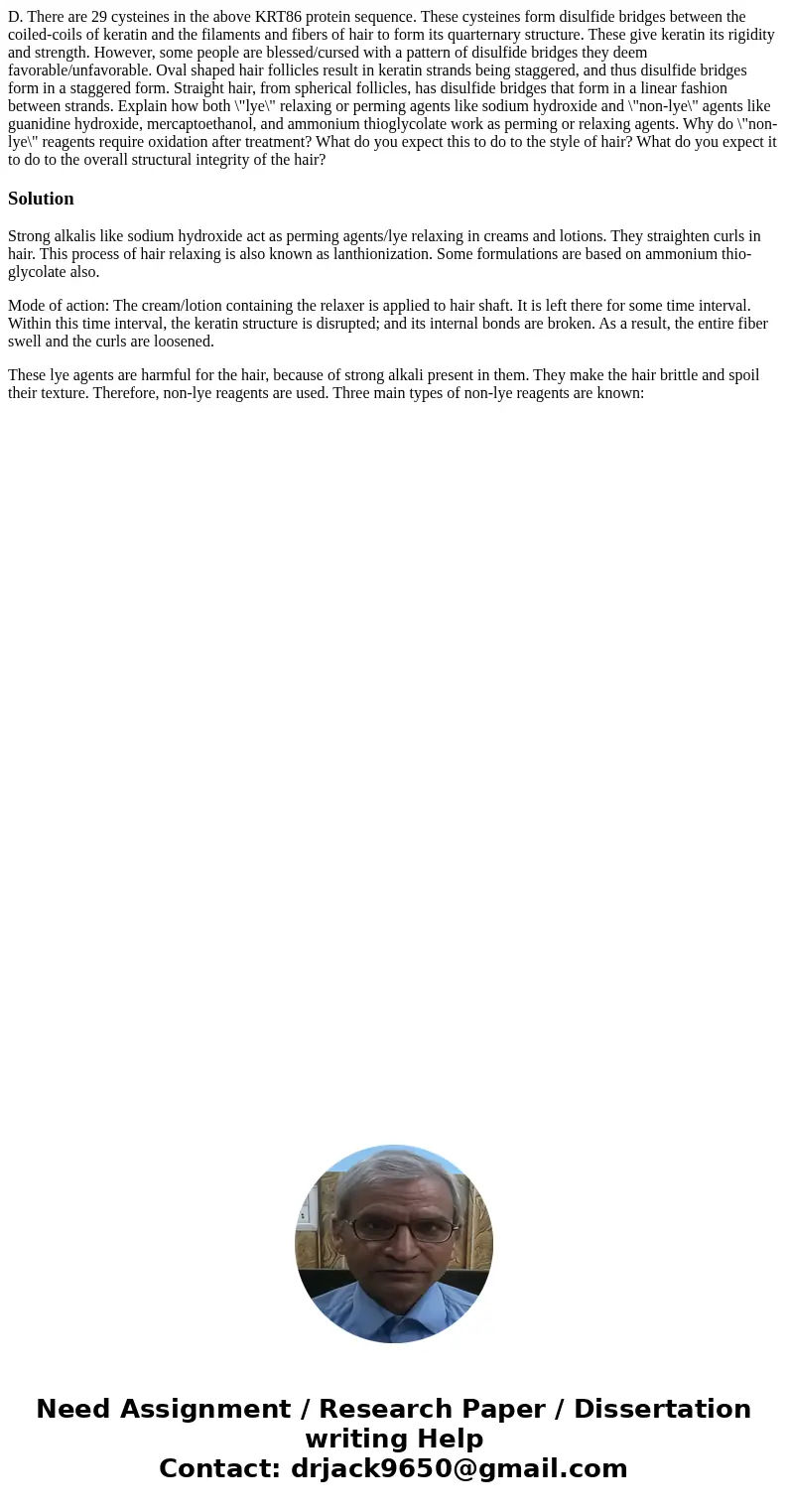D. There are 29 cysteines in the above KRT86 protein sequence. These cysteines form disulfide bridges between the coiled-coils of keratin and the filaments and fibers of hair to form its quarternary structure. These give keratin its rigidity and strength. However, some people are blessed/cursed with a pattern of disulfide bridges they deem favorable/unfavorable. Oval shaped hair follicles result in keratin strands being staggered, and thus disulfide bridges form in a staggered form. Straight hair, from spherical follicles, has disulfide bridges that form in a linear fashion between strands. Explain how both \"lye\" relaxing or perming agents like sodium hydroxide and \"non-lye\" agents like guanidine hydroxide, mercaptoethanol, and ammonium thioglycolate work as perming or relaxing agents. Why do \"non-lye\" reagents require oxidation after treatment? What do you expect this to do to the style of hair? What do you expect it to do to the overall structural integrity of the hair?
Strong alkalis like sodium hydroxide act as perming agents/lye relaxing in creams and lotions. They straighten curls in hair. This process of hair relaxing is also known as lanthionization. Some formulations are based on ammonium thio-glycolate also.
Mode of action: The cream/lotion containing the relaxer is applied to hair shaft. It is left there for some time interval. Within this time interval, the keratin structure is disrupted; and its internal bonds are broken. As a result, the entire fiber swell and the curls are loosened.
These lye agents are harmful for the hair, because of strong alkali present in them. They make the hair brittle and spoil their texture. Therefore, non-lye reagents are used. Three main types of non-lye reagents are known:

 Homework Sourse
Homework Sourse